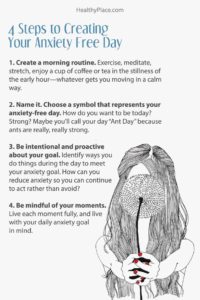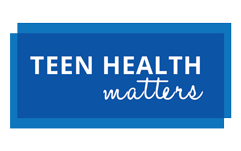
What is Anxiety?
Anxiety is a treatable condition, but 80 percent of children (including teens) with a diagnosable anxiety disorder are not getting treatment, according to the 2015 Child Mind Institute Children’s Mental Health Report.
Anxiety is actually a very normal reaction to stress. Examples of some of the stressors faced by teens include public speaking, final exams, competitions, and more. In response to these events, people may experience a change in heartbeat patterns, shakiness, or sweating. Oftentimes these can be tackled by different techniques.
Some other common examples of symptoms brought on by anxiety include:
- Feeling nervous, restless or tense
- Having a sense of impending danger, panic or doom
- Rapid breathing (hyperventilation)
- Sweating
- Feeling weak or tired
- Trouble concentrating or thinking
- Difficulty sleeping
- Inability to control worries
- Having the urge to avoid things that trigger anxiety
But for a sum of teens, symptoms of anxiety could come in different forms and lengths and negatively affect them as well as the people and things around them, like family life, friendships, and school. This could quite possibly mean that an individual is experiencing a diagnosable anxiety disorder.
Diagnosed Anxiety Disorders
Some examples of diagnosable anxiety disorders include:
- Generalized anxiety disorder
- Panic disorders
- Post-traumatic stress disorder
- Obsessive-compulsive disorder
- Social anxiety disorder
- Specific phobias
Anxiety can impact people emotionally and physically. Whether it is a diagnosable disorder or a response to overwhelming amounts of stress, it can be handled.
Emotional changes brought on by anxiety include pervasive worry and symptoms such as irritability, difficulty concentrating, restlessness, unexplained outbursts, and anything else that can be linked to abnormal mind oriented changes. Ways to deal with this includes accepting that you cannot control everything, doing your best and being proud of however close you get to the goals you create for yourself, maintaining a positive attitude, and learning about what specifically triggers your anxiety so that you can investigate.
Physical changes include frequent headaches and migraines, gastrointestinal problems, unexplained aches and pains, excessive fatigue, complaints of not feeling well with no obvious medical cause, changes in eating habits, and more. Different methods to try and handle changes relating to the physical body include limiting alcohol and caffeine intake (which can aggravate anxiety symptoms) and drinking more water, eating well-balanced meals, trying to get enough sleep, and exercise daily.
How to Reduce Anxiety or Stress
Here are some ways that anxiety or stress symptoms can be alleviated in the moment:

These strategies can help people accordingly. If one option does not work, it’s best to try another one. If symptoms become worse or grow stronger, it’s best to go talk to a doctor or an authorized individual. Remember that it is more than okay to reach out to people to talk about what you’re going through and remember that if you are ever in an emergency call 911 and take appropriate action immediately.
Resources for mental health conditions and concerns:
http://teenhealthmatters.org/get-help-now/mental-health/
Free Crisis Hotlines:
National Alliance on Mental Illness (NAMI) Helpline: 1-800-950-NAMI (6264)
National Suicide Prevention Lifeline: 1-800-273-TALK (8255)
Teen Line: 1-310-855-HOPE (4673) or 1-800-TLC-TEEN (852-8336)
You can also contact the Grassroots Crisis Intervention 24-Hour Crisis Hotline if you need to speak to someone.
Talk: 410.531.6677
Visit: www.grassrootscrisis.org
Content Sources
https://adaa.org/living-with-anxiety/children
